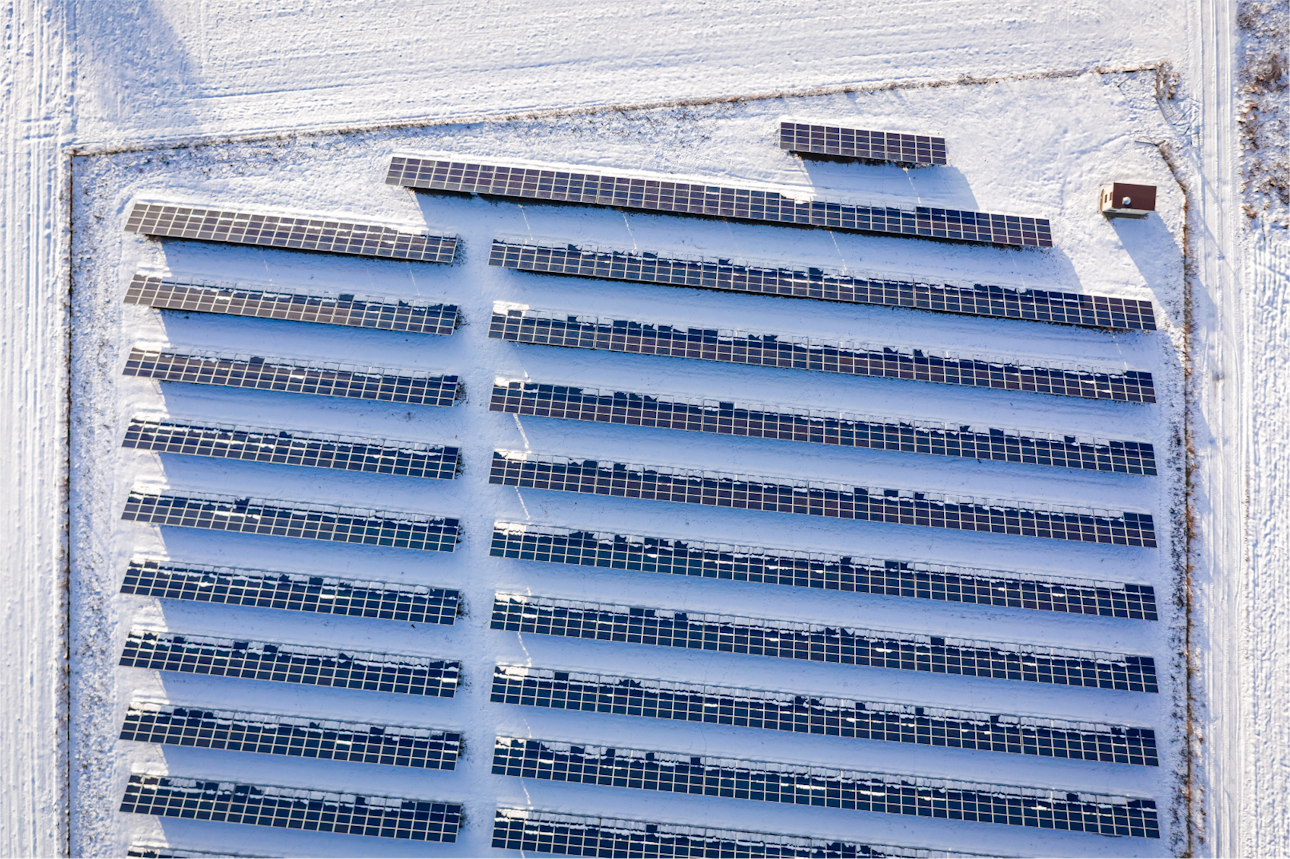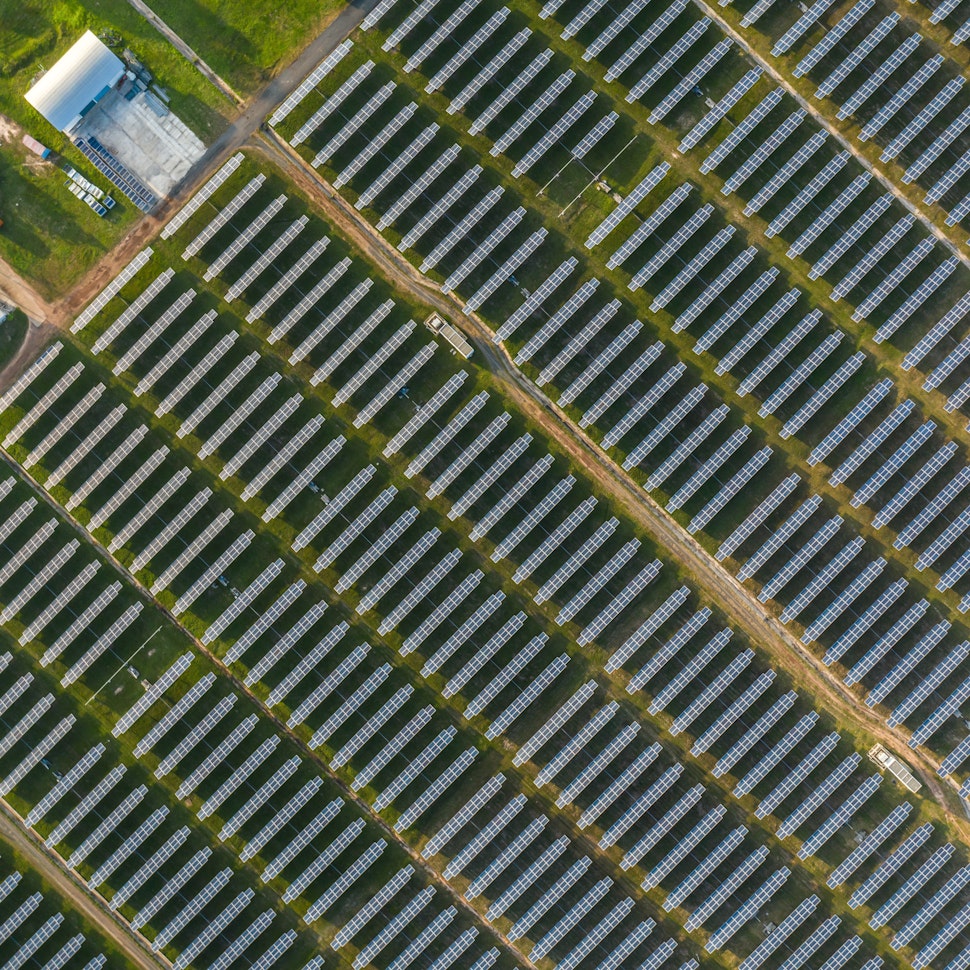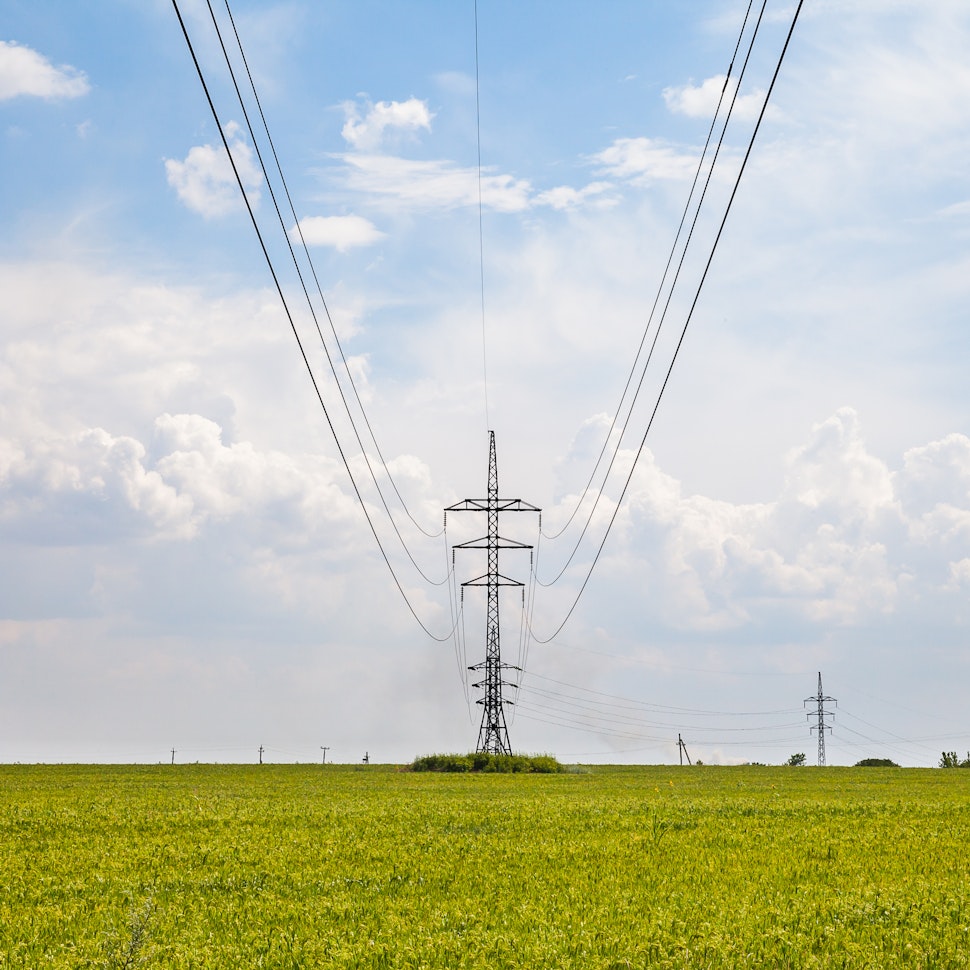- Solar energy blog
- Solar facts and trends in the Nordics
Solar facts and trends in the Nordics
The Nordics are increasingly adding solar to their renewable mix. We explore their solar energy strategy and share the figures that prove their success.


Ghada Alafranji
Senior Account Executive
I started my career journey working as a part-time Project Engineer before graduating from university. I have worked on Solar-Diesel-Battery Hybrid systems and parallel to that I was in Business Development and this is why RatedPower is my perfect fit, I get to do the two most enjoyable things to me Engineering & Business.

In recent years, the Nordic countries have made significant strides in incorporating solar energy into their renewable energy mix. This blog delves into the key trends and statistics that showcase their growing commitment to sustainability and their use of solar power. Let’s take a closer look.
Gain valuable insights into the Nordics' path to climate neutrality. Download our eBook: Key milestones of Nordic environmental policy, to explore key climate policies from the Nordic Council study and discover strategies for strengthening the region's environmental framework.
Denmark
Denmark has achieved new records in renewable energy in 2024. Last year, solar and wind power made up 63% of the country’s electricity, with solar usage increasing by 53% compared to 2022. As a result, Denmark’s renewable energy use increased by 1.6% overall.
Fossil fuel use continues to decline, too. In 2023, coal consumption decreased by an impressive 35%, while natural gas use fell by 2.7%. As a result, CO2 emissions from energy dropped by 4.8%, making a notable dent in the country’s carbon emissions.
Last year, Denmark generated the third largest amount of solar power per person in Europe, with 832 watts per capita, a 17% leap from 2022. And they’re not slowing down. Denmark plans to add 11.7 GW of solar capacity by 2030, aiming to keep the momentum of solar’s rapid rise.
Finland
Finland is also doubling down on its solar efforts. By the end of 2023, Finland’s installed solar power capacity hit 1,000 MW, an increase of more than 300 MW in just one year. Most of that power (936 MW) was created by micro-generation in residential areas.
With a 47% increase in capacity over the last year, nearly 30,000 homes were fitted with solar panels in 2023 alone. And while most of Finland’s solar energy comes from small-scale systems right now, larger projects are underway.
For example, the VSB Finland wind-solar hybrid park is a large Puutionsaari project in Northern Ostrobothnia that will combine 350 MW of wind power with 100 MW of solar power, making it one of the largest hybrid energy projects in Europe. Once it’s up and running, it will provide clean electricity to 337,500 homes. In addition, it’s set to be a stepping stone for even more advanced tech like green hydrogen production.
The Finnish government is also driving renewable energy growth with streamlined policies. In 2023, it shortened the permitting process for green projects and introduced a national hydrogen roadmap, targeting 10% of the EU’s green hydrogen by 2030.
Alongside these efforts, Finland is investing four billion euros in upgrading its grid and offering financial aid and tax breaks for solar installations, helping to keep solar energy affordable. These initiatives are paying off. Finland now boasts the lowest non-household electricity prices in the EU.

Iceland
Iceland, known for its geothermal and hydropower, is starting to adopt solar energy. Thanks to falling costs and better technology, solar power is expected to become a competitive option within the next three to five years. The country has set a goal to generate 400 GWh of solar power annually by 2040.
Iceland’s solar journey may just be starting, but with improved government support, it’s only a matter of time before solar energy becomes a key part of the country’s renewable energy mix.
Norway
Norway is seeing a surge in solar power. In 2023, the country added 300 MW of solar capacity, nearly doubling the total to 597 MW. From January 2023 to August 2024, solar production hit impressive new highs, with June 2024 alone generating 84.18 GWh, a big jump compared to the previous year.
This year, the government is stepping things up even further. New policies are making solar mandatory on public buildings, and commercial solar projects are becoming easier to roll out.
Norway aims even higher with plans to generate 8 TWh of solar energy annually by 2030, covering around 5% of the country’s electricity needs. With solar production currently at 0.454 TWh, these efforts will play a major role in addressing potential power shortages expected by 2027.
With 98.9% of Norway’s electricity already coming from low-carbon sources, solar is adding imperative capacity to meet growing energy demands. Expanding solar is no longer just an option. It’s necessary.
Discover how the Nordics are leading Europe's green energy transition. Download our eBook: The State of Green Nordics, to explore the region’s renewable energy progress, the role of solar power, and key players shaping the future of energy innovation.
Sweden
Solar energy has been making its mark in Sweden. By mid-2024, the country’s total installed solar PV capacity surpassed 4.43 GW, with 460 MW added in just six months. Of that, 260 MW came from homes and 190 MW from businesses. Even though the pace has slowed slightly since 2023, solar is still on the rise, fueled by government incentives like tax breaks and subsidies.
Sweden’s electricity grid is already one of the cleanest in Europe, with 95.9% of its power coming from low-carbon sources. Hydropower and nuclear still take the lead, but solar power is also finding its place. Over the past year, solar energy contributed 1.12% of the country’s electricity. It’s a small but meaningful step toward Sweden’s goal of remaining a leader in clean energy.
There are some bumps ahead, however. The government plans to cut solar subsidies and scrap tax breaks for micro-producers in 2025, which could slow things down. But with solar already playing a role in Sweden’s low-carbon future, it’s clear the journey is just getting started. Solar may still be small in the mix, but it’s laying the groundwork for much bigger things to come.
Conclusion
Solar energy in the Nordics is gaining serious momentum. With increasing installations and ambitious targets, the region proves solar can thrive even in northern climates. The rapid progress across these countries sets a clear path for solar to become a key pillar in their renewable energy future.
Latest stories
Related posts
Market analysis
Powering through the peak: Why solar + storage is gaining momentum in MENAT
Discover how MENAT is building a functioning solar economy and why rising peak demand during extreme heat is squeezing its energy architecture.
Updated 11 DEC, 25


Market analysis
The rise of utility-scale PV + storage plants in Italy
Discover how Italy’s latest policies and auctions are driving utility-scale solar and battery storage projects to meet ambitious 2030 targets.
Updated 4 DEC, 25

Market analysis
From sun to socket: What Iberia’s grid needs to handle 2030 renewable targets
Discover how Spain and Portugal are upgrading their grids to meet ambitious renewable targets and prevent future blackouts.
Updated 25 NOV, 25

- RatedPower
- Solar energy blog
- Solar facts and trends in the Nordics
 Watch a demo
Watch a demo Ask our AI Product Expert
Ask our AI Product Expert
